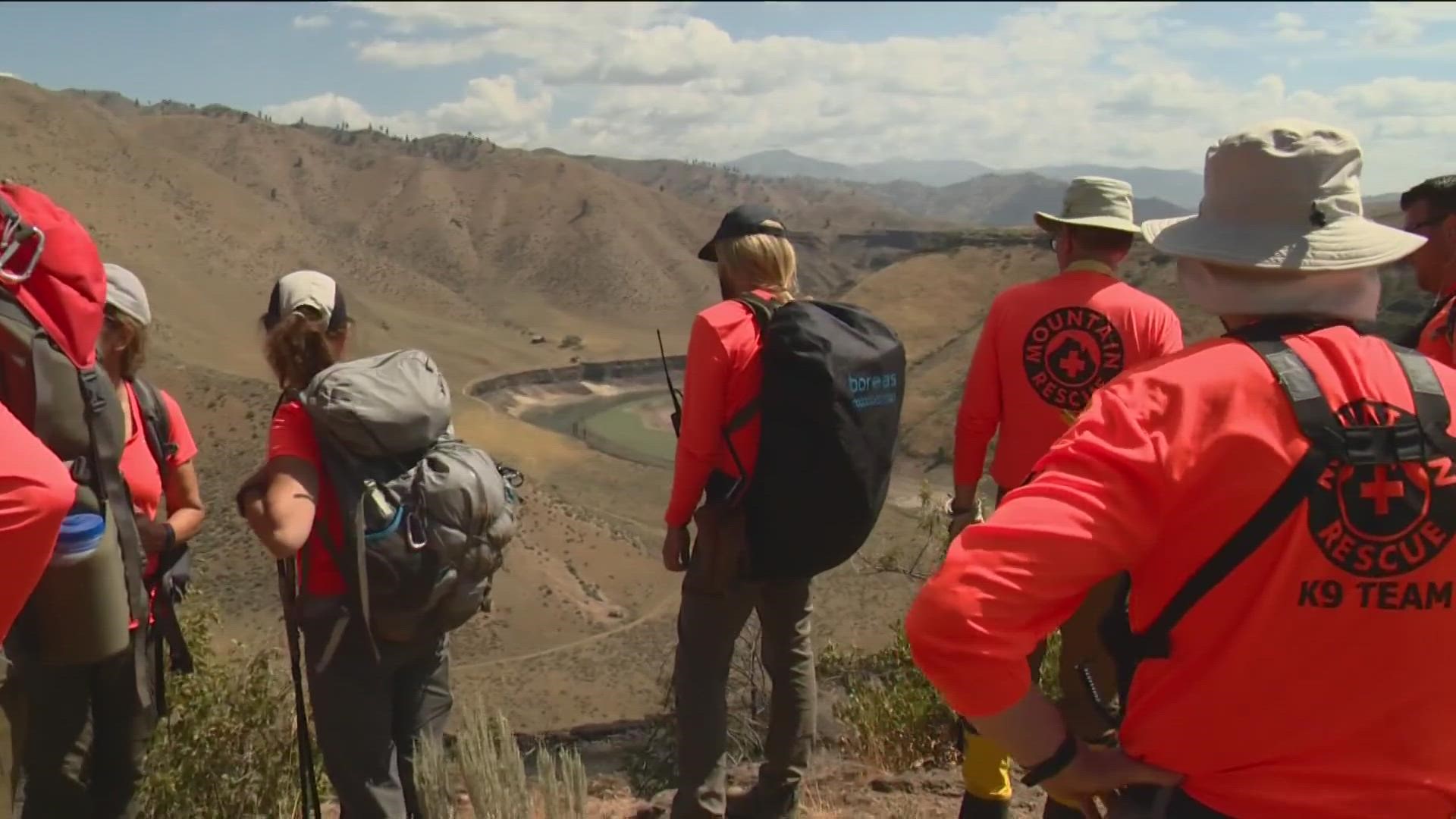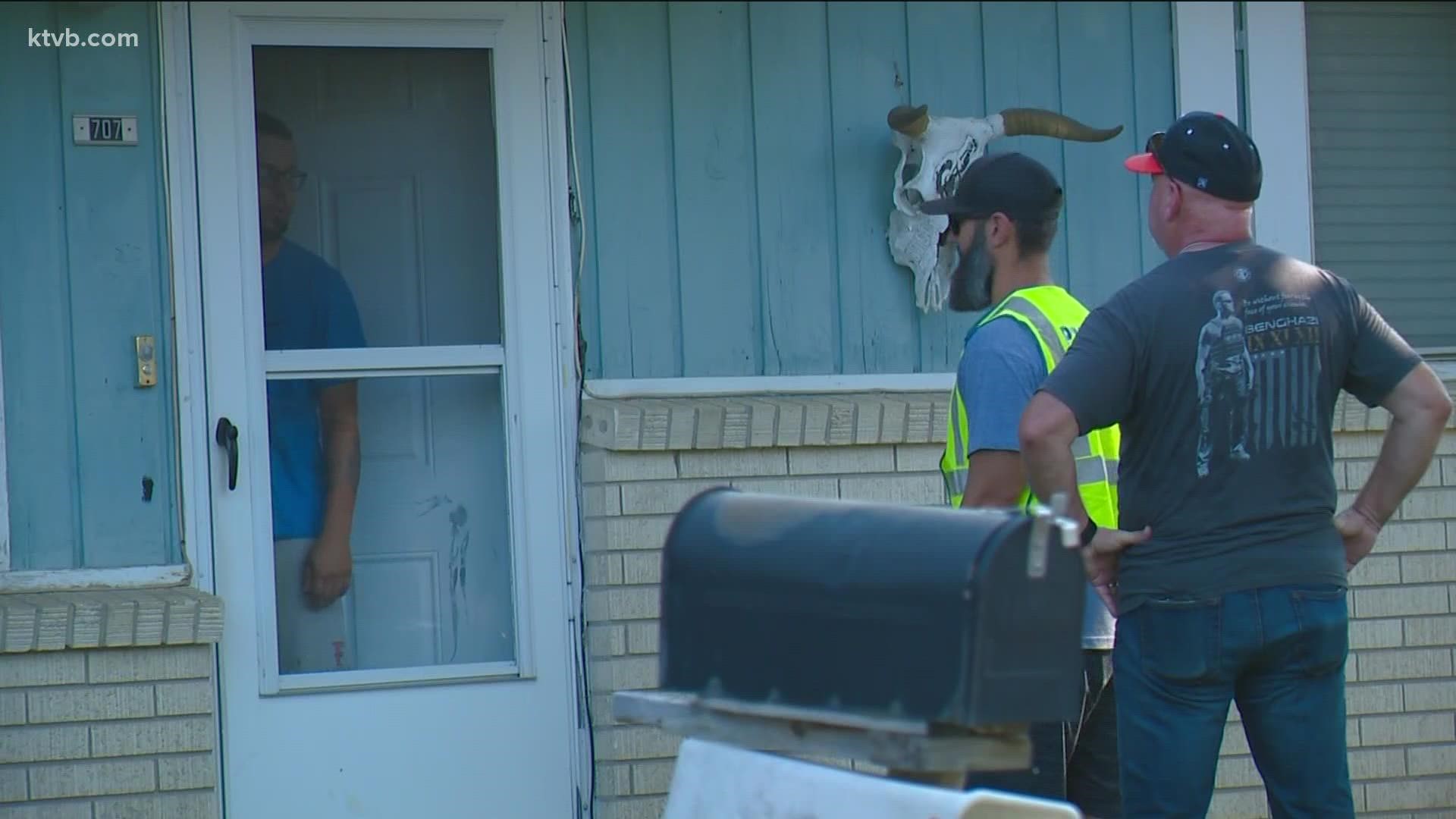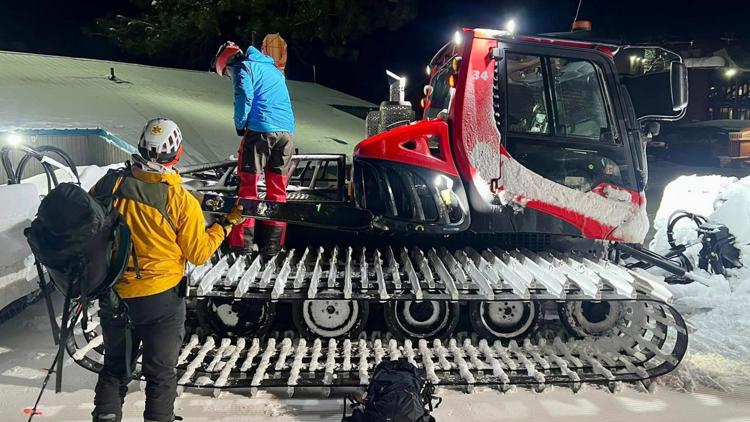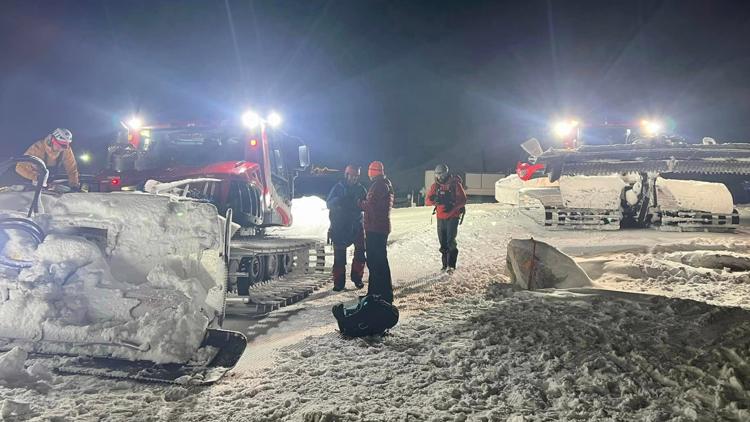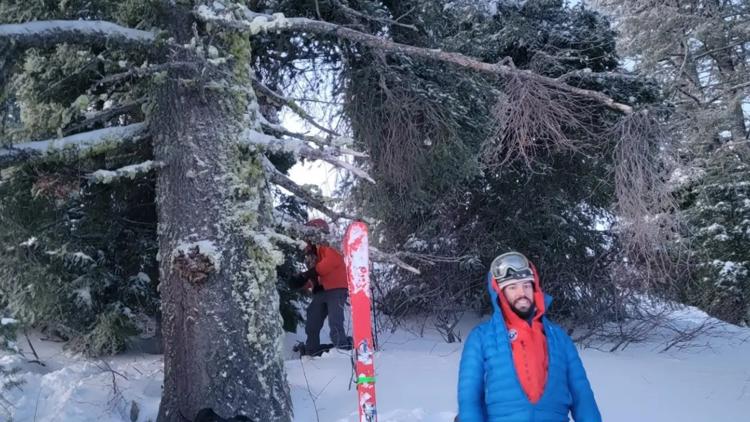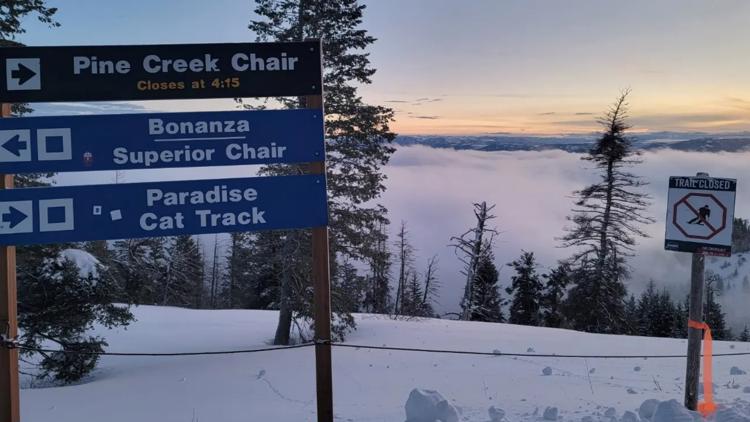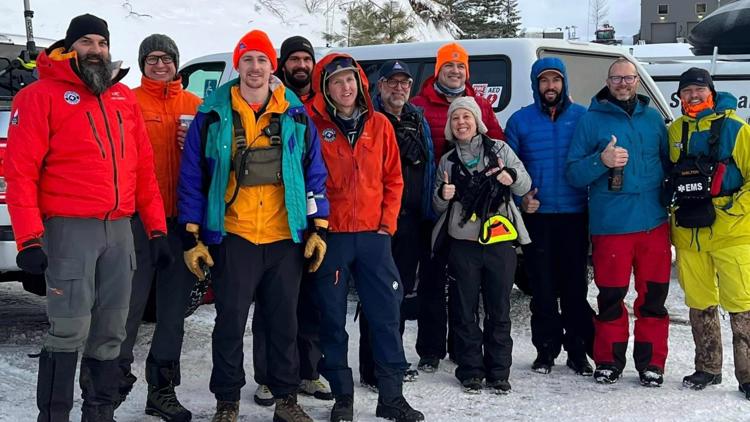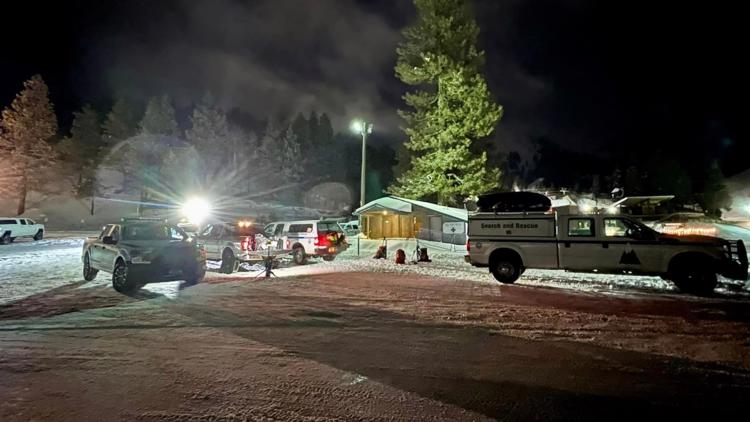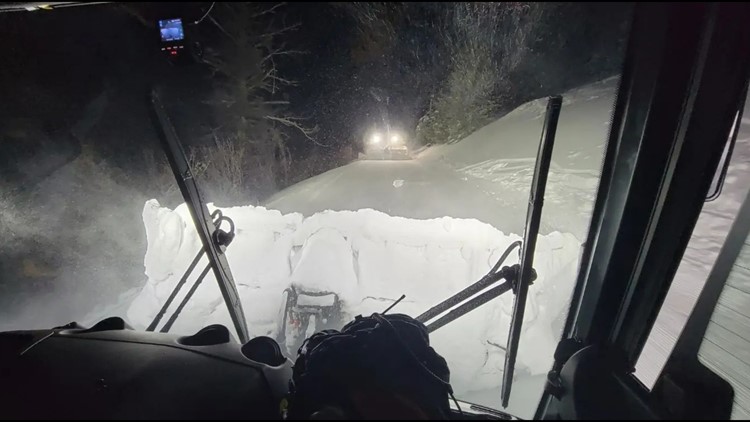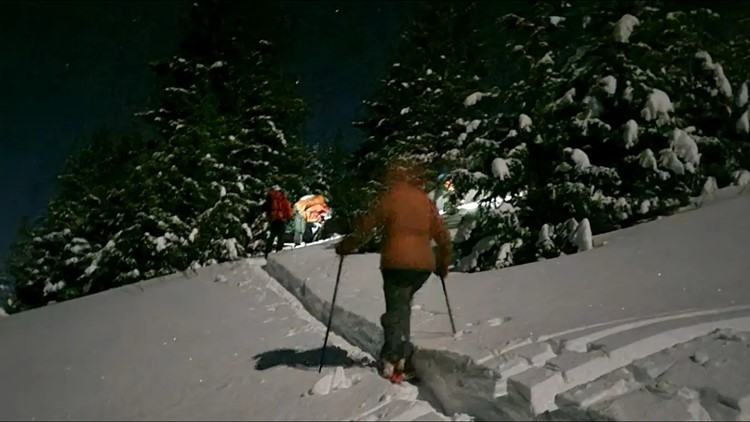BOISE, Idaho — During some of the scariest moments in a person's life, when a loved one is missing or trapped, volunteers with Idaho Mountain Search & Rescue are there.
Founded in 1959, the Idaho Mountain Search & Rescue Unit participates in an average of 40 rescue operations per year. The majority of the potentially life-saving efforts go unnoticed by the general public.
Mark Sullivan is the public relations director for the volunteer organization, often referred to as IMSARU. He said there are 120 volunteers on the roster, dedicated to serving Idaho and surrounding states in search-and-rescue efforts and mountain safety education when asked.
Before IMSARU was officially incorporated in December 1961, Idaho State Police, Idaho Fish and Game and local sheriff's offices were responsible for backcountry rescues. The crews recognized the need for a well-trained search and rescue team, leading to IMSARU's debut.
The People


The Idaho Mountain Search & Rescue Unit features five specialty teams, each with different responsibilities, skills and assets to help find a missing person:
Technical Rescue Team: This group is often seen hanging on ropes during rescue operations and training. The technical team is responsible for missions in steep terrain, and specializes in general rope work.
K-9 Team: They are trained in human remains detection, air scent and trailing. K-9s and their handlers complete years of training in order to receive nationally-recognized certifications required for deployment on searches.
Drone Team: Unmanned aerial vehicles (UAV) -- drones -- are used in instances where an area is difficult to search based on its terrain. Drones can also be used search high-probability areas with a ground team to follow.
Bike Team: While IMSARU has an all-weather vehicle, the Bike Team plays an important role considering Idaho's vast amount of trails. The team decreases a search area by clearing well-known travel routes. The unit is made up of elite mountain bikers, ready to respond when Idahoans cycle.
Man Tracking Team: They are used in instances when an empty car is located, with the skillset to find the direction where a missing person may have traveled. The team also focuses on small details, such as footprints or blades of grass, and is the first to investigate a scene.
"We respond to searches and rescues through law enforcement," Sullivan said. "From the moment we get the call, to the moment we leave the door, is one hour."
The Preparation


A KTVB crew recently toured IMSARU's Boise compound, where the group trains. With so many backcountry and mountain missions, the Idaho Mountain Search & Rescue Unit's main vehicle is suited with stretchers, Starlink satellite internet, and "everything" the team needs for a heroic task.
Mission equipment includes snow gear, snow poles, avalanche beacons, probes, an inflatable raft and more, according to Sullivan. IMSARU even has a rock climbing wall to replicate real-time rescues.
"So, we practice our knots and pulling the skeds and stretchers up and down the walls," Sullivan said.
Volunteers also train with Rescue Randy, a 170-pound mannequin. Sullivan admitted Randy is "pretty heavy," even for the elite search and rescue team.
"Sometimes we'll train with live subjects and invite community members or IMSARU members, and other times we pull out Rescue Randy and practice moving him around," Sullivan said.
Idaho Mountain Search & Rescue trains relentlessly, so they are ready for when that call for help comes.
The Purpose


Adrienne and William Gillen are search technicians who joined the grant- and volunteer-funded nonprofit organization in October 2020.
Beyond hiking "all over Nevada, Oregon and Idaho" searching for missing people in different terrains against various obstacles, William Gillen said his role with IMSARU also requires emotional and mental stability for those with unanswered questions.
"We do radio work, liaison with family members who are concerned obviously for a missing person," William Gillen said.
Adrienne Gillen said she volunteers on roughly five missions each year. William Gillen is involved in six to eight operations every 12 months.
"It's a wonderful sense of being useful, hopefully giving someone a chance," Adrienne Gillen said. "For me, I am always thinking of the individual, the family."
The search technicians and IMSARU volunteers understand with each call comes a sense of urgency.
"They've got family members, they have loved ones, how does it all fit in? We've got a team, we want to make sure our team is safe, and we all come back," Adrienne Gillen said. "The truth of the matter is, we don't always find what we're looking for."
The Reality
In July 2021, Idaho Mountain Search & Rescue crews were in Fruitland searching for then-5-year-old Michael Vaughan.
Twenty-three members of IMSARU joined Fruitland Police, The National Guard and other law enforcement agencies as they united to spread their resources across the rural town of Fruitland.
They also helped search for 21-year-old Everette Jackson from Louisiana, who disappeared in the Payette River before his body was found a week later.
The search included helicopters, drones, boats and cadaver dogs. When rescuers reached Jackson, they had to tie a rope around his torso to retrieve his body from the river due to the unsafe nature of the current, reports said.
"Not every search is guaranteed to be a recovery," Sullivan said. "The quicker we can get out there, the quicker that we can potentially find success."
IMSARU Training Director Chris Brookman has volunteered with the organization for 10 years. He also is one of the search and rescue managers who helps plan and organize searches.
Brookman said while IMSARU will "exhaust all our info and resources," the work is difficult, and does not always end the way volunteers and loved ones wish it would.
"We all love the happy fairytale ending, but of course, that's simply not the reality," Brookman said. "Every time we go out, you know, there's times when we do find a subject and they're deceased. That happens actually fairly often sometimes. Then there's times that we do a search, and we simply, you know, we exhaust all our info and resources, and we're not successful. We have searches at IMSARU where we still haven't found people."
While success is celebrated, certain searches create an emotional element for the Idaho Mountain Search & Rescue Unit. Brookman said missions like the search for Michael Vaughan and Everette Jackson can sometimes take a toll on the volunteers involved.
"I think in the short term, if you're out in the moment, we just have to stay focused on our mission. In the long term, it's really important to recognize things like that are affecting you," Brookman said. "Anytime that our members go through something that might trigger those emotions, maybe they have to help with, you know, moving a deceased subject or they see something traumatic, we actually have a team of people that will reach out to them and follow up."
The Process


Brookman met KTVB in the Foote Park area near Lucky Peak Dam, one of the places where he conducted one of his first missions as the lead of operations.
"If someone is stranded out here or lost, you know that the clock is ticking immediately, like we're already behind the schedule here, if you will," Brookman said.
Over the last few years, Brookman said the search end of things have changed dramatically. IMSARU now has tools and resources available that they did not have before.
Volunteers first focus on identifying what direction a missing person traveled, using several methods to gather that information.
"The first one is actually called reflex tasking, and that's basically a checklist of all the initial actions that I want to take to start performing the search," Brookman said.
Brookman then looks at a book of statistical data, which is a compilation of more than 50,000 individual search and rescue incidents categorized by incident type. Examples of "incident type" could be information about the hiker involved or the nearby terrain.
"What that does is it lets me kind of analyze within this map here, where that hiker is more or less likely to be," Brookman said.
While looking at a particular case with KTVB, Brookman was able to identify a 50% chance of a missing hiker being within a certain 1.3-mile radius. His in-depth statistical data also showed a 25% chance of the hiker being within a radius of less than a mile.
In January, crews with the Idaho Mountain Search & Rescue Unit rescued a man after he lost both skis in a small avalanche on the back side of Bogus Basin.
"This is almost kind of a big game of hide and seek, but with really high stakes," Brookman said.
Once IMSARU completes a mission, the training starts all over again.
"There's that human element, and you can make a difference," William Gillen said. "Even if you're not the one climbing rappelling off the cliff, you can make a difference, and we do."
Sullivan echoed the comment, telling KTVB "we're here because we want to be, but we also hope that you don't actually need us."
Bogus Basin skier rescued from backcountry canyon
The Funding
As mentioned, the Idaho Mountain Search & Rescue Unit is a volunteer group that does not receive government funding. Instead, they rely on fundraising and donations.
IMSARU also has public meetings once a week where they train on medical issues, and search tactics and techniques. Once a month, they hold field training.
The search and rescue organization recommends Idahoans stay prepared if they plan on recreating in the backcountry, having the proper equipment such as a probe and beacon.
Elmore County, Valley County and Elko County also have their own search and rescue units. IMSARU will sometimes assist those counties in their rescue efforts.
If you'd like to volunteer, everyone is welcome. IMSARU holds two onboarding sessions a year, with the next one happening this month. For more information, you can visit IMSARU's website.
Watch more Local News:
See the latest news from around the Treasure Valley and the Gem State in our YouTube playlist:

